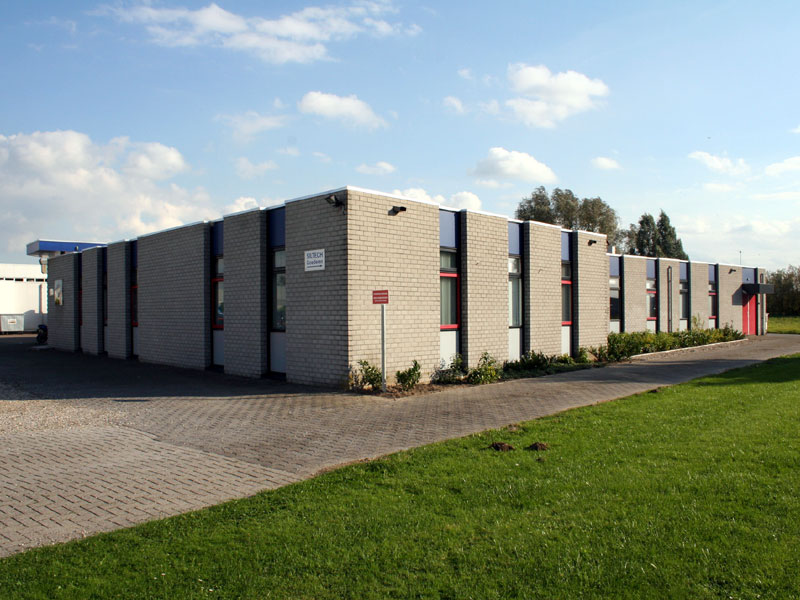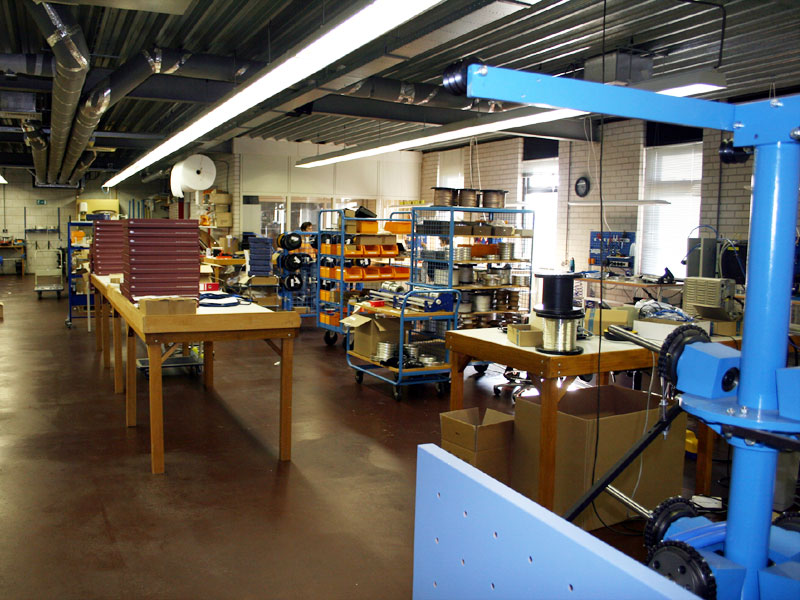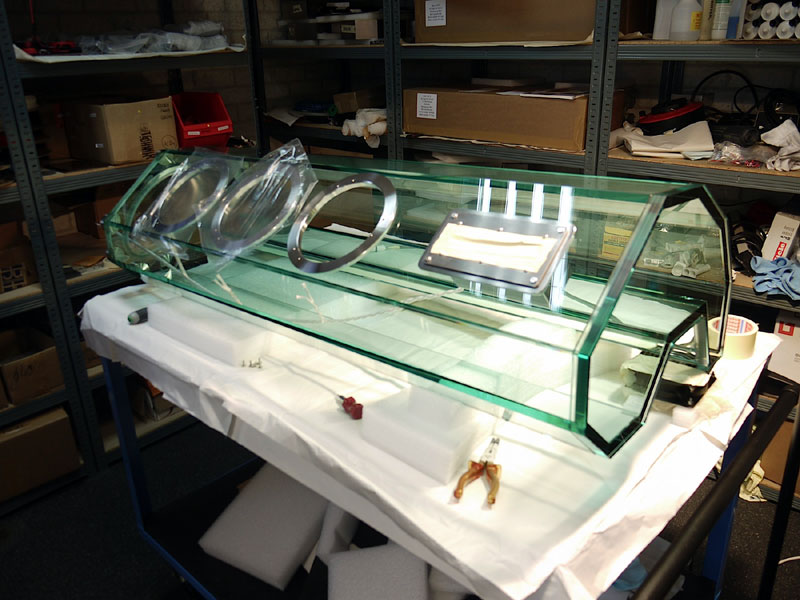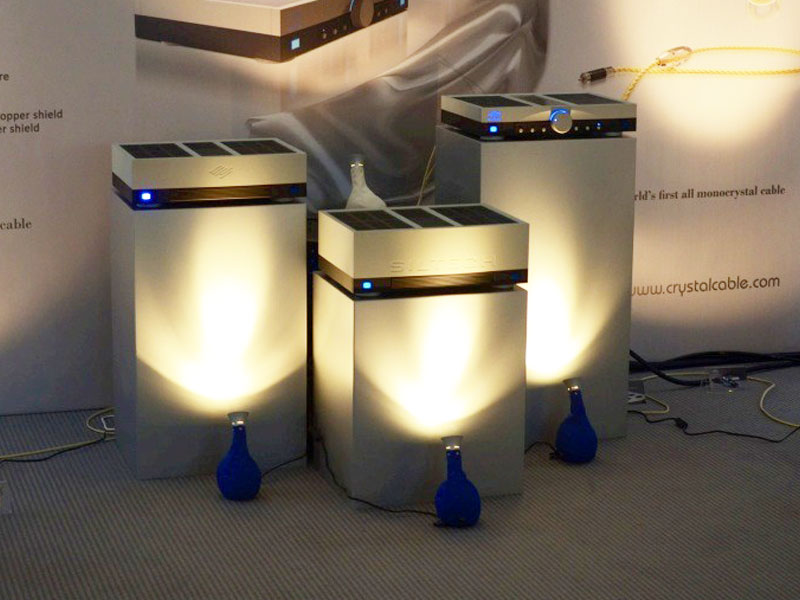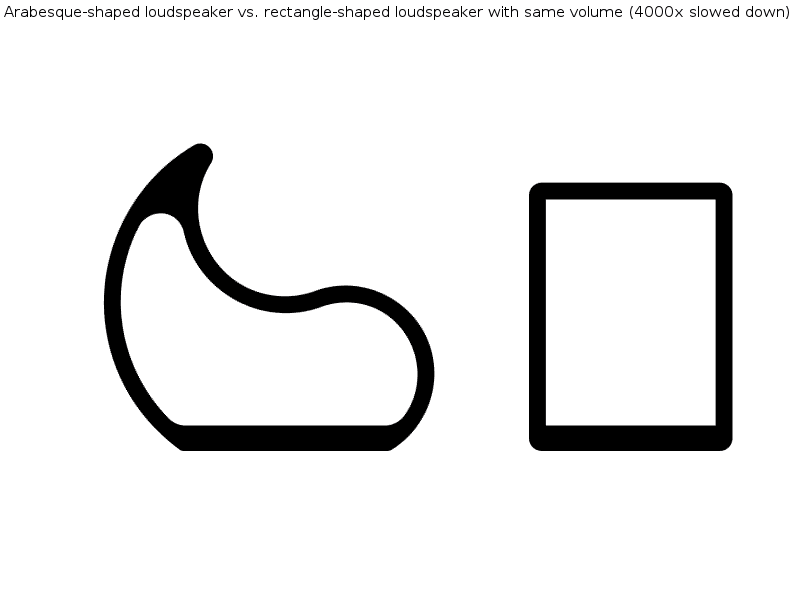Siltech and Crystal Cable: One Company, Two Brands and a Host of Products
Various cables had come and gone since the first shock waves subsided, but the first cable to take performance (and price) unequivocally into high-end territory was the Siltech. Along with van den Hul’s MC-One Silver, Siltech’s original 4-56 established high-end wiring as a new consumer category, an event memorably marked by no lesser person than Martin Colloms announcing that henceforth maybe as much as 10% of your budget might be committed to cables! My how times have changed. While the audio-cable industry has certainly developed, it has also attracted more than its fair share of shysters and charlatans, with pricing policies and reality gaps that bring new meaning to the phrase "what the market will bear." Which is a problem for those companies that do bring serious science, methodology and proprietary technology to the challenge of transferring audio signals. Well to the fore within that select group is that self-same Siltech, a company that has been steadily applying its burgeoning knowledge to the challenge for over 25 years, all under the steady hand of Edwin van der Kleij-Rijnveld. From day one, Siltech has been all about metallurgy, improving the conductivity and audio performance of its designs through refinement of the conductor materials and dielectrics. As one great audio sage was heard to declare, "I don’t care about 99.999999 purity. What’s the other 0.000001? That’s what really matters!" It was a philosophy that Siltech took seriously, leading to a range of significant metallurgical advances. If you can divide cable companies into those that actually make their own wire and those that just adapt off-the-shelf cables designed for other applications, then you don’t get much more committed than doing your own metalwork. Perhaps the best example of that is the company’s development of its own proprietary silver/gold alloy, a metal in which the "contaminant" element in the silver crystal matrix was eradicated by substituting gold atoms in its place. You don’t get a much better 0.000001% than that! But what makes the silver/gold alloy even more significant is the way its emergence shaped Siltech’s development. Home, sweet home
hris Thomas and I began our visit to Siltech at the company offices.The administrative heart of the operation is located in a modern, mirrored tower, overlooking the Rhine and offering a strangely familiar view. Yes, this is Arnhem and it is that bridge, still unmistakable after all these years. But turning from history, the neat, clean-cut modernity of the four-office suite brings us bang up to date -- and face to face -- with our first conundrum. These are the offices of both Siltech and Crystal Cable, nominal competitors, but with Siltech run by Edwin and Crystal by wife Gabi. Sharing office space, sharing technology and competing for market share: doesn’t that occasionally make things awkward at home? Apparently not, for not only is Gabi the hi-fi industry’s most consummate diplomat, her explanation of what might seem like a strange strategy is a model of common sense.
Siltech have always been identified with heavier-gauge conductors and the larger-diameter, bulkier cables that go with them. The development of the silver/gold alloy produced such significant improvements in conductivity that suddenly it was possible to contemplate far thinner conductors without compromising the electrical conductivity of the cable, whilst also possibly exploiting the advantages inherent in more minimal construction. The problem was that such a path, despite some obvious sonic attractions, would have constituted a pretty dramatic visual U-turn for Siltech. Rather than risk compromising the established brand, it made more sense to create a new and separate brand identity. With Gabi at the helm, the visual elegance and minimalism were extended far beyond initial notions, creating cables that embody a far more feminine aesthetic than the "boys and their toys" style of the vast majority of cables -- Siltech included. It’s a move that has allowed the company to establish not one but two brands in many important markets, each with its own virtues and appeal. In fact, it’s pretty smart when you consider it like that.
Visit the production facility and it becomes even more apparent why such a move was so appropriate. From the compact and carefully delineated work space to that particular combination of automated precision and meticulous, hand-assembly, the Siltech/Crystal workshop has that unmistakable air of an atelier operation. From the space given over to ultra-advanced computer-aided design to the astonishing speed and accuracy of the precision strippers that automatically trim and prepare the multilayered coaxial conductors used by Crystal, ready for termination, everything about the process suggests the careful assessment of tasks, the appropriate application of engineering and technology. Those Crystal conductors are fine -- almost delicate -- in construction, with multiple layers of thin insulation and screening, including one comprised of the incredibly hard and stiff Kapton -- a real bear to deal with. Solution? Automate that process -- even if the initial investment required is significant. But when it comes to termination, there’s no substitute for an experienced hand and eye, so all Crystal and Siltech cables are hand-terminated in-house.
It’s exactly the sort of balanced decision-making process that informs other precision industries, be they instruments, watches or high-end audio electronics. What is unusual is to see it extended into the realm of audio cables, a field which at one end of the spectrum is industrial in scale, whilst at the other is often a cottage industry verging on DIY. Yet it’s an ethos that extends beyond the products themselves into every aspect of their presentation and packaging, from the cable identifier barrels used by both brands, to the appearance of the cables themselves and the standard of the boxes they arrive in. Unpack a Crystal Cable and the multiple boxes, the beautifully chosen materials and the final unveiling are all more akin to a product from IWC or Chanel than one from the audio industry. Siltech cables follow suit, but here the governing aesthetic might be described as rather more Breitling. Yet in both cases that presentation isn’t an end in itself but a natural extension of the care that’s gone into product. Not for the first time
hilst establishing a whole new brand identity, even if the two brands have since been recombined under the International Audio Holdings banner, might seem extreme, it’s far from the first time we’ve seen Siltech branch out into areas beyond the cable domain. Early ventures have included an extremely well-regarded tube amplifier and the massive Pantheon XXV loudspeaker, both limited-edition products that have acquired a dedicated following amongst the lucky few that own them. More recently, we have witnessed the successful debut of the Crystal Cable loudspeakers, and a new, ultra-low-noise tube line stage from Siltech. Indeed, our presence in Holland is to experience not just a new high-end cable range from Crystal, the Absolute Dream, soon to be reviewed by Chris Thomas, but also a fascinating new amplifier project from Siltech, building on the starting point established by the C1 line stage. But before we get ahead of ourselves, let’s just backtrack to those Crystal speakers, because in many ways, more than any other product, they underline Siltech/Crystal’s credentials as a solid science- and engineering-based company.
The visual appeal of glass loudspeakers is obvious, which is why there have been so many attempts to launch such products. Perhaps the most sonically successful past example was from Waterfall, but attention still fastens on their appearance rather than their sound quality. The problem of course lies in the fact that loudspeaker cabinets generally conceal a whole multitude of aesthetic sins, from wiring and crossover components to internal damping and copious wadding. Remove the visual shielding provided by the box and suddenly the speaker has to be as neat on the inside as it is on the outside -- and that’s quite a challenge. Not only do relatively few driver manufacturers pay any great attention to their units’ backsides, there’s also the issue of what to do about the visually opaque (and generally pretty ugly) damping materials that so many speakers rely on to control the cabinet and the air mass within it. Why bother with a transparent cabinet if all it reveals is a mass of long-haired wool, a tangle of wire and the gungy side of some bituminous damping pads? The answer lay in the adoption of COMSOL software, an extraordinarily advanced, complex and expensive design package more common to major industrial enterprises or ultra-high-tech research projects. The fact that Edwin saw this step as a natural one for Siltech is perhaps the clearest possible statement of how he views the company’s relationship to the audio industry as a whole. This is all about solid science and cutting-edge engineering. What makes COMSOL so special? After all, CAD/CAM technology isn’t actually new and Finite Element Analysis (FEA) is fast becoming just another item in the designer’s toolbox, a shortcut in the prototyping process. But where FEA allows designers to model the mechanical form and behavior of parts without actually making them, COMSOL goes a stage further, allowing analysis of fluid and gas dynamics. COMSOL is invaluable when it comes to looking at what happens when air transits through a jet engine or someone lights a rocket motor, so analyzing the insides of a speaker cabinet should be a piece of cake. One look at the unusual shape of the cabinet of Crystal Cable's Arabesque speaker ($70,000/pair) should tell you that it’s far from standard. What’s not so obvious is that COMSOL has enabled the company to look at the behavior of both the cabinet and the air pressure inside it simultaneously, using the dimensions, shape and venting of the enclosure to dissipate structural and air-mass resonance, virtually eliminating the need for damping materials to deal with either problem. In fact, the internal damping element has been reduced to a single, dome-like pincushion placed in the base to handle the vertical mode between the only two parallel surfaces in the whole structure. The result isn’t just visually striking, helped by the jewelry-like appearance of the internal wiring and the fact that the crossover is tucked away in a separate, mass-loaded enclosure/base beneath the cabinet, it’s also sonically surprising. If hi-fi has a tendency to sound the way it looks, the Arabesque is definitely the exception to prove that rule. The sound that comes out of the speakers competes directly with its price competition from the high-profile brands firmly at the top of the loudspeaker tree. Indeed, when it comes to instrumental textures, harmonic resolution and microdynamic discrimination, the Crystal speakers are remarkable, helped in no small part precisely because they have eliminated the internal damping that slows energy and slurs detail. The assumption might be that buying a pair of Arabesques is one way to get a pair of high-end speakers into a design-conscious interior, but that would be to seriously underestimate the speaker. The appearance is a byproduct of the design path, not its raison d’etre, and musically these are genuinely stellar performers, a fact underlined by the extension of the cabinet form into the smaller models built from aluminum. It’s the shape and structure that define the performance. Once you have that, then it can be successfully adapted to different materials. Next time you see a pair of Arabesques at a show or in a store, stop and take a listen -- but first, shut your eyes. I think you’ll see what I mean. And now, for their next trick. . .
ome things in hi-fi seem as fixed and permanent as the Himalayas, not least the accepted structure of our systems. A high-end setup will consist of a source component (in as many boxes as possible), a line stage, a power amp (or two) and a pair of speakers. So it says on the tablets of stone. Except that it doesn’t. In reality, system structures are constantly evolving, especially when it comes to changes in topology. So, first we had CD players, then we had transports and DACs, then we went back to single-box machines, but now with external clocks or power supplies. Finally, the DAC is reemerging in the wake of computer audio. What defines the success or otherwise of evolutionary steps in product development is more about public perception than it is about actual performance. So, at a time when the notion of high-quality integrated amplifiers is again gaining traction, who in his right mind would be saying that it’s not two-box amplifiers we need, but three? Yet that is exactly what Siltech is doing with its launch of the SAGA amplification system. On the face of it, it’s a product that breaks all the rules, yet it also asks some serious questions. I’ve long believed that the three-part system model (source, amplification, speakers) is flawed -- and the SAGA approach demonstrates exactly why. Rather than splitting the system in two, you can only really split it in half, the junction coming at the output of the line stage, reflecting the critical interface between source and line stage and the equally critical match of amplifier and speaker. What SAGA does is divide the amplifier into three separate boxes: a line stage, a voltage-gain stage and a current-gain stage, optimizing the electrical parameters of each. More importantly, it also adjusts the architecture of the gain itself -- hence the acronym for Structural Amplifier Gain Architecture. To cut a long story short, the question Siltech asked was, Why attenuate the input signal so drastically, only then to re-amplify it, adding residual noise in the process? What they did instead was build the C1 line stage with minimal attenuation and as a result they only needed to apply minimal gain. Throw in an incredibly quiet battery power supply and an equally quiet chassis (COMSOL again) and you have a remarkably pure and unobstructive control unit -- but one that wouldn’t drive the majority of amplifiers on the market without cranking its volume control well toward the end-stop, a concern that colored the initial reviews. But now the logic becomes clear. Despite using tubes, the C1 possesses an astonishingly high signal-to-noise ratio -- a noise performance that can now be exploited by the matching amplification boxes.
Like the C1, the V1 voltage amplifier is a battery-powered tube design, allowing it to produce remarkable levels of gain without at the same time amplifying the residual noise that comes from higher-gain line stages. Finally the P1 power amplifier is an AC-powered, current gain stage, with a voltage gain of 1, maintaining the astonishing signal-to-noise ratio of the amplifier as a whole. How astonishing? How about a dynamic range of 138dB, ± a further 6dB depending on speaker sensitivity? In an average system, that’s around 10dB more than is generally available. Throw in power outputs of 300 watts into an 8-ohm load, 600 watts into 4 ohms and 1.2kW into 2 ohms and you’ve got a seriously potent amplifier, one that made the medium-sized and medium-efficiency Crystal speakers sound almost horn-loaded! Even better, despite the inherent cost of any multi-box system, the chassis being the most expensive part of any product, the V1 voltage-gain stage can drive a pair of P1s in a biamped arrangement, at least providing an upgrade path for the megalomaniacally power-hungry consumers out there -- an important consideration if you are going to lock yourself into a single amplification system. Quick, clean and ultra dynamic, the SAGA amplifiers seem to deliver on their claims. Seriously expensive they might be (the C1 costs €28,000, with the V1 adding another €9000 and the P1 a further €18,000), but first impressions suggest that once again the company’s lateral thinking has produced a genuinely novel solution that challenges the accepted status quo. Final judgment awaits their impending arrival for review, but this is one product I’m really looking forward to. Definitely not the same old, same old
ometimes, visiting a manufacturer takes on an almost disorientating sense of déjà vu. There really are only so many ways to chop up a sheet of MDF and turn it into a loudspeaker cabinet, and rolls of cable on a shelf look pretty much the same, no matter what it says on the reels. So to find a company, any company, that is so distinctly individual in its identity and specific in its approach is a treat indeed. We -- audiophiles, the press, manufacturers -- tend to concentrate so much on the products, a tendency exaggerated by the obsession we all seem to have with individual product reviews, that we often ignore the all-important bigger picture. In performance terms, that means that we forget to think in a system context. In product terms, we forget that the company behind that product (its ethos, its longevity and its reliability) is just as important as the performance itself. That’s what makes the solid engineering and philosophical individuality of the Siltech/Crystal setup so reassuring and refreshing. This is one company with both the courage of its own convictions and the technological and business acumen to back them up. A cable company making electronics and speakers? Normally -- as history demonstrates -- that would be a recipe for disaster. In this instance it’s not so much a case of "Why?" but "Why not?" The results speak for themselves, making the extension from cables into electronics and transducers just as natural as the connection itself. COMSOL in operation
he animated graphic below shows a COMSOL model of two contrasting cabinet shapes, each with equal-thickness walls of identical material. The one on the left approximates the Arabesque cabinet shape, the one on the right, a conventional rectangular construction. The model is slowed down by 4000 times, showing what happens across 1.5 milliseconds of real time when a 200Hz to 2kHz stepped impulse is fed to the driver. The blue contour lines show pressure build up while the red arrows indicate the degree of cabinet displacement that results (exaggerated for clarity in this case). The larger and heavier the arrow, the greater the displacement.
Looking at the two simulations it should be clear not only that the Arabesque shape enjoys considerable advantages over a basic rectangle -- which should come as no surprise -- but also how the COMSOL program can aid cabinet design and development. It is hard to imagine somebody arriving at the Arabesque design without access to a program such as this, which allows adjustments to be made in cabinet material, shape, dimensions and thickness in a virtual world, before the expensive process of physical prototyping begins. Perhaps more important, if the Arabesque is an extreme solution for a product where performance is more important than price tag, imagine the benefits to be had at more affordable price points, where designers have far fewer options and a lot less budget to play with. In the case of the Arabesque, COMSOL has produced a radical solution in terms of shape and materials employed, but just think about the advantages to be had if the designer is limited to some variation on a rectangular footprint and various grades of MDF -- as well as a limited time scale and a tight budget. It’s this versatility that makes COMSOL so
attractive and powerful. Equally at home dealing with exotic materials, the gas
temperatures generated by a jet exhaust or the requirements of a $500 loudspeaker cabinet,
it really is the Swiss Army Knife of computer-aided design, a harbinger of things to come. |




